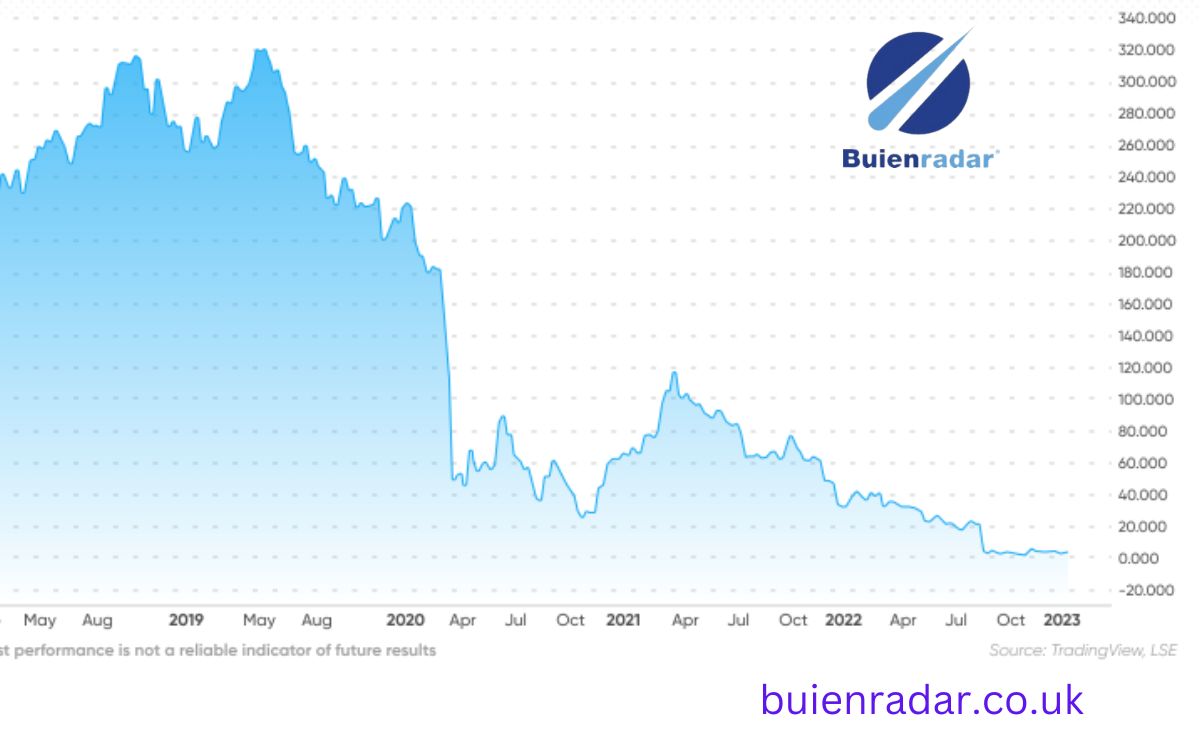Rogue Trader Rotate Grand Strategist: In the high-stakes game of finance, where fortunes can shift with a single tweet or a sudden market blip, trading has evolved from chaotic speculation to an intricate dance of strategy and technology. Once viewed as the domain of reckless mavericks and lone wolves—those rogues who thrived on gut instinct and sheer audacity—the world of trading has transformed into a sophisticated arena dominated by grand strategists. Join us as we embark on a riveting journey through time, exploring how innovative techniques, cutting-edge algorithms, and data-driven insights have reshaped the landscape of modern finance. Discover how today’s traders leverage advanced strategies that blend art with science, turning what was once seen as an unpredictable gamble into a calculated pursuit of success. Buckle up; it’s going to be an enlightening ride! the rogue trader rotates grand strategist.
Introduction: The Evolution of Trading Techniques in Modern Finance
In the fast-paced world of finance, where fortunes can be made and lost in the blink of an eye, trading techniques have undergone a dramatic transformation. From the days when rogue traders operated in shadows to today’s grand strategists who harness sophisticated algorithms, the landscape has evolved remarkably. Once seen as mavericks or even renegades, these individuals have shifted toward becoming savvy tacticians equipped with advanced technology and strategic insights. This evolution reflects not just changes in methods but also a broader understanding of risk management and market dynamics. Join us as we explore how rogue traders are turning into grand strategists in modern finance—an exciting journey marked by innovation, challenges, and remarkable success stories.
What is a Rogue Trader?
A rogue trader is an individual who engages in unauthorized trading activities. Their actions can lead to significant financial losses for companies and investors alike.
Historically, rogue traders have made headlines for their reckless decisions. They often act independently from the company’s risk management protocols, driven by personal ambition or greed.
Notable cases include Nick Leeson, whose risky trades led to the collapse of Barings Bank in 1995. Another infamous example is Jérôme Kerviel, whose unauthorized positions caused a €4.9 billion loss at Société Générale.
These revelations highlight not just individual failings but also systemic issues within financial institutions. When unchecked, rogue trading can threaten entire organizations and shake investor confidence worldwide.
Definition and History of Rogue Traders in Finance
Rogue traders are individuals who engage in unauthorized trading activities, often resulting in significant financial losses for their firms. The term evokes a sense of rebellion against traditional practices within the finance world.
Historically, rogue trading has roots that trace back decades. Early instances were marked by traders exploiting loopholes or circumventing regulations to fulfill personal ambitions. These actions not only jeopardized firm integrity but also shook investor confidence.
Notable cases include Nick Leeson, whose speculative trades led to Barings Bank’s collapse in 1995. His story exemplified how one trader’s recklessness could unravel centuries-old institutions.
As financial markets evolved, so did the tactics employed by these rogue actors. Each era brought new technologies and methods that made it easier—and riskier—for them to operate under the radar. This evolution set the stage for a shift from rogue behavior towards more strategic approaches in modern finance.
Infamous Cases of Rogue Trading
Rogue trading has produced some shocking headlines over the years. One of the most notorious cases is that of Nick Leeson, who single-handedly brought down Barings Bank in 1995. His unauthorized trades led to losses exceeding £800 million, leaving a once-proud institution in ruins.
Another infamous example involves Jerome Kerviel, a trader at Société Générale. In 2008, his risky positions resulted in a staggering loss of €4.9 billion. Kerviel’s story highlights how unchecked ambition can spiral out of control.
The case of Kweku Adoboli also stands out. As an UBS trader, he racked up $2 billion in losses through speculative bets on exchange-traded funds and derivatives before being arrested in 2011.
These incidents serve as stark reminders of how rogue traders can disrupt financial markets and shake public trust profoundly.
Transitioning from Rogue to Grand Strategist
The world of trading has dramatically shifted, moving from the chaotic maneuvers of rogue traders to the calculated decisions of grand strategists. This transition is marked by a growing reliance on algorithmic trading.
Algorithmic trading harnesses sophisticated mathematical models and high-speed computer programs to execute trades at lightning speed. It minimizes human error and emotional decision-making, aspects often exploited by rogue traders.
Despite its advantages, this method isn’t without risks. Traders must navigate market volatility and ensure their algorithms are fine-tuned for various scenarios.
Risk management emerges as a cornerstone in this evolution. Grand strategists employ techniques like diversification to spread risk across multiple assets. Hedging serves as an insurance policy against unwanted price swings.
Position sizing further refines their approach, ensuring that no single trade can devastate their portfolio. It’s all about strategy over impulse in today’s financial arena.
The Rise of Algorithmic Trading
Algorithmic trading has taken the financial world by storm. This approach uses computers to execute trades based on pre-defined criteria, transforming how transactions occur in real time.
The speed and accuracy of algorithms bring a competitive edge. Traders can analyze vast amounts of data quickly, identifying patterns that human investors might miss. This precision allows for high-frequency trading, where trades are executed within milliseconds.
As markets become increasingly complex, algorithmic strategies have gained traction. They reduce emotional decision-making and enhance discipline among traders.
However, reliance on technology does not come without risks. Flash crashes and market anomalies often stem from errant algorithms acting unpredictably under certain conditions.
Despite these challenges, the allure of efficiency keeps pushing firms toward this innovative frontier in finance. The shift marks a significant evolution for those once labeled as rogue traders now aspiring to become grand strategists in an automated landscape.
Explanation of Algorithmic Trading
Algorithmic trading is a sophisticated method that utilizes computer algorithms to execute trades. These algorithms analyze market data at lightning speed, making decisions based on predefined criteria.
Traders program these algorithms to identify patterns and trends in the market. This allows for rapid execution of trades, often without human intervention. The precision and speed of algorithmic trading can capitalize on even the smallest price fluctuations.
At its core, this approach minimizes emotional decision-making. Traders rely on data-driven insights rather than instinct or sentiment.
Moreover, algorithmic trading enhances liquidity in markets by allowing large volumes of stocks or assets to be traded efficiently. As technology evolves, so does the potential for creating more advanced strategies tailored to specific investment goals.
Advantages and Disadvantages
Algorithmic trading presents several advantages that can enhance the efficiency of financial markets. Speed is a key benefit; algorithms can process vast amounts of data in milliseconds, executing trades faster than any human could. This rapid response time allows traders to capitalize on fleeting market opportunities.
In addition to speed, algorithmic trading reduces emotional bias. Traders are prone to making impulsive decisions based on fear or greed, but automated strategies follow predetermined rules without emotional interference.
However, there are pitfalls as well. The reliance on technology introduces risks related to system failures and glitches. A malfunctioning algorithm can lead to significant losses or unintended market impacts.
Furthermore, while algorithms thrive in stable environments, they may struggle during high volatility periods. Sudden market changes can trigger unexpected outcomes that automated systems might not be programmed to handle effectively.
Implementation of Risk Management Strategies
Risk management strategies are vital for navigating the unpredictable waters of trading. They serve as a safety net, ensuring that even during turbulent times, traders can protect their capital.
One effective method is diversification. By spreading investments across various assets, traders reduce the impact of poor performance in any single area. This approach builds resilience against market volatility.
Hedging offers another layer of protection. It involves taking positions that counterbalance potential losses. For instance, if you own stocks, investing in options can help mitigate risks associated with price declines.
Position sizing is fundamental too. Determining how much to invest in each trade helps maintain control over risk exposure. Smaller position sizes limit losses and preserve capital for future trades.
Implementing these strategies requires discipline and constant evaluation. Traders must stay informed and adaptable to shifting market conditions while keeping an eye on their overarching goals.
Importance of Risk Management in Trading
Risk management is the backbone of successful trading. Without it, even the most seasoned traders can find themselves in precarious situations.
Every trade carries inherent risks. Understanding these risks allows traders to make informed decisions and strategize effectively. A measured approach helps mitigate potential losses that could arise from market volatility.
Implementing risk management techniques enables traders to preserve their capital over time. This focus on sustainability fosters long-term growth rather than short-lived gains.
Moreover, a robust risk management plan instills confidence in decision-making. It empowers traders to navigate uncertain markets without succumbing to fear or impulsive choices.
Ultimately, prioritizing risk management transforms a trader’s mindset from one of recklessness to strategic foresight. This evolution is key for anyone looking to thrive in the competitive world of finance and shift away from rogue behaviors toward becoming a grand strategist.
Techniques Used by Grand Strategists for Risk Management
Grand strategists leverage various techniques to manage risk effectively. One key approach is diversification, spreading investments across different asset classes. This reduces the impact of poor performance in any single area.
Another vital technique is hedging. By using financial instruments like options and futures, traders can offset potential losses. This strategy allows for a safety net during market fluctuations.
Position sizing also plays a crucial role. It involves determining the appropriate amount to invest in each trade based on overall portfolio size and risk tolerance. This careful calculation protects against significant losses while allowing for growth opportunities.
Lastly, continuous monitoring and adjustment are essential practices among grand strategists. They analyze market conditions regularly, keeping an eye on emerging risks that may require immediate attention or tactical shifts in their strategies.
Diversification
Diversification is a cornerstone of smart trading strategies. It involves spreading investments across various financial instruments and sectors to reduce risk. By not putting all your eggs in one basket, traders can cushion themselves against market volatility.
Consider the impact of an unforeseen event affecting one sector. A diversified portfolio will likely weather that storm better than a concentrated one. This approach helps balance potential losses with gains from other areas.
Moreover, diversification opens up opportunities for profit in different markets. Traders can tap into emerging industries while still holding steady positions in established ones.
It’s also essential to understand the correlation between assets when diversifying. Choosing negatively correlated assets can enhance protection against downturns, creating a more resilient overall strategy.
Ultimately, embracing diversification empowers traders to navigate the unpredictable waters of finance with confidence.
Hedging
Hedging is a strategic move in finance that aims to offset potential losses. Think of it as insurance for your investments. By using various financial instruments, traders can minimize risk while maintaining exposure to market movements.
This technique often involves options and futures contracts. For example, if you own stocks, purchasing put options allows you to sell at a predetermined price. This way, even if the stock’s value plummets, you’re protected against significant losses.
It’s essential to understand that hedging isn’t about making profits; it’s about safeguarding what you have. While it can reduce volatility in your portfolio, it may also limit upside potential when markets rise sharply.
Many grand strategists use hedging as part of their comprehensive risk management approach. The goal is not just survival but achieving more stable returns over time amidst market fluctuations.
Position Sizing
Position sizing is a crucial aspect of risk management in trading. It determines how much capital to allocate for each trade based on your overall account size and risk tolerance.
By calculating the appropriate position size, traders can control their exposure to potential losses. This prevents any single trade from derailing their entire portfolio.
Effective position sizing involves understanding both market volatility and personal comfort levels with risk. For instance, if you’re more conservative, you might opt for smaller positions during turbulent market conditions.
Conversely, aggressive traders might increase their stakes when they have high conviction in a particular setup. Regardless of strategy, maintaining discipline in position sizing fosters sustainable growth over time.
Ultimately, it allows traders to navigate the unpredictable waters of financial markets without losing sight of long-term goals.
Role of Technology in the Evolution of Trading Techniques
Technology has dramatically reshaped trading techniques over the past few decades. The shift from floor-based trading to digital platforms marked a significant evolution in how trades are executed.
Algorithms now process vast amounts of data in milliseconds, allowing traders to make informed decisions quickly. This rapid analysis can identify patterns and trends that human traders might miss.
Moreover, mobile technology has democratized access to financial markets. Investors no longer need extensive resources or expertise; they can trade anytime and anywhere.
The rise of social trading platforms facilitates collaboration among investors. Sharing strategies and insights fosters a community-driven approach that enhances learning.
However, reliance on technology also brings challenges. System failures or cyber threats could disrupt operations unexpectedly. As we embrace these advancements, understanding their implications becomes essential for all market participants.
Impact of Technology on Traditional Trading Methods
The landscape of trading has dramatically shifted thanks to technology. Traditional methods relying on human intuition and gut feelings are now largely supplemented by advanced algorithms and automated systems.
Gone are the days when traders spent hours analyzing charts manually. With real-time data feeds and sophisticated software, decisions can be made in milliseconds. This speed is crucial in today’s fast-paced market environment.
Moreover, accessibility has improved significantly. Retail investors can now trade alongside institutional players, leveling the playing field like never before.
However, this reliance on technology isn’t without risks. System failures or glitches can lead to costly errors in an instant. Traders must adapt quickly, embracing both innovation and caution as they navigate this evolving financial realm.
Emergence
The emergence of innovative trading technologies has reshaped the landscape of finance. As we’ve seen, rogue traders once operated in shadows, often leading to catastrophic consequences for themselves and their firms. However, the transition towards a more structured approach—where grand strategists reign supreme—has paved the way for a new era of accountability and precision.
Algorithmic trading stands out as one major advancement. It allows strategies to be executed with speed and accuracy that human traders simply cannot match. This shift not only minimizes emotional decision-making but also adheres strictly to risk management protocols.
As technology evolves further, it continues to empower traders by providing sophisticated tools and analytics. The rise of machine learning offers predictive insights that can enhance strategic planning significantly.
Moreover, blockchain technology promises greater transparency in financial transactions while reducing fraud risks associated with rogue trading behaviors. With these advancements at our fingertips, future generations are poised to navigate markets more effectively than ever before.
The journey from rogue trader to grand strategist exemplifies how innovation transforms challenges into opportunities within modern finance. As we embrace this evolution, it’s evident that success now hinges on adaptability, strategy refinement, and leveraging cutting-edge technological solutions.
Conclusion About Rogue Rrader Rotate Grand Strategist
In today’s ever-evolving financial landscape, the role of a trader has transformed from that of a rogue gambler to a grand strategist. With advancements in technology and access to vast amounts of data, traders are now equipped with sophisticated tools and techniques to make informed decisions. This evolution has not only changed the way we approach trading but also highlights the importance of adapting and evolving in an industry where knowledge is key. As we continue to see new developments in finance, it will be interesting to see how trading techniques will further evolve and shape the future of modern finance.
One of the key factors that has led to this evolution is the shift towards algorithmic trading. This method of trading relies on complex mathematical models and algorithms to analyze large amounts of data and execute trades at lightning-fast speeds. This has not only increased efficiency but also minimized human error, making it a preferred technique in modern finance.
Another important aspect that has contributed to the transformation of trading techniques is the emergence of high-frequency trading (HFT). With the use of powerful computers and advanced algorithms, HFT allows traders to take advantage of small price discrepancies in the market and make profits within milliseconds. While controversial, HFT has become a dominant force in financial markets, highlighting the need for traders to keep up with technological advancements.
In addition to technology, there has been a shift towards more strategic thinking in trading. Traders are no longer relying solely on technical analysis, but are incorporating fundamental analysis and macroeconomic factors into their decision-making process. This holistic approach allows for a deeper understanding of market trends and helps traders make more informed decisions.
Moreover, globalization and interconnectedness have also played a significant role in shaping modern trading techniques. With markets being highly interconnected, traders must consider global events and economic policies when making investment decisions. This requires constant monitoring and adapting
FAQs Related To Rogue Trader Rotate Grand Strategist
Q: What exactly is a “rogue trader”?
A: A rogue trader is an individual who engages in risky or unauthorized transactions that result in significant losses for their employer or clients. These traders often operate without proper oversight and can cause major disruptions to financial markets.
Q: How do rogue traders differ from traditional traders?
A: Traditional traders typically make trades within established guidelines and risk management strategies set by their firm or institution. Rogue traders, on the other hand, engage in high-risk activities outside of these parameters.
Q: Why have rogue traders become more prevalent in recent years?
A: The rise of technology has made it easier for individuals to bypass traditional checks and balances and engage in risky trading activities. Additionally, the pressure to generate profits quickly has led some traders to take greater risks than they should.
Q: What were some defining moments that led to a shift towards more strategic trading techniques?
A: One key moment was the 2008 financial crisis, which revealed flaws in the traditional buy-and-hold approach to investing. This encouraged investors to explore alternative strategies such as diversification and risk management techniques.
Q: How have technological advancements impacted trading techniques?
A: Technology has revolutionized the way we trade by making it faster and more efficient. High-frequency trading algorithms now dominate market activity, leading many traditional traders to adopt technology-driven strategies themselves.
Q: Can you provide examples of modern strategic trading techniques being used today?
A: Sure! Some popular modern techniques include algorithmic trading (using computer programs to execute trades), social media sentiment analysis (monitoring public sentiment on social media platforms), quantitative analysis (using mathematical models to identify trading opportunities), and derivatives trading (investing in financial instruments whose value is derived from an underlying asset).
Q: What should individuals or institutions do to prevent rogue traders?
A: Implementing proper risk management strategies, conducting thorough background checks on employees, and maintaining open lines of communication within the organization are some ways to prevent rogue traders. Regular audits and reviews can also help identify potential issues before they become significant problems.
The evolution of trading techniques in modern finance has brought about many changes and challenges. While rogue traders may still exist, the focus has shifted towards more strategic and technology-driven approaches that aim for long-term success rather than quick gains. By staying informed and adaptively responding to market trends, traders can navigate the ever-changing landscape of modern finance successfully.










